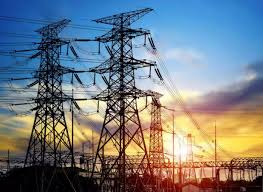The federal government is preparing a three-year electricity tariff relief package aimed at reducing power costs for the agriculture and industrial sectors, in an effort to boost production and control inflation across the country.
⚡ Government Plans to Slash Tariffs by Up to Rs14 Per Unit
According to officials in the Power Division, the new plan proposes a tariff reduction of up to Rs14 per unit, setting electricity rates between Rs22 and Rs23.50 per unit for both sectors.
Currently, agricultural users pay around Rs38 per unit, while industrial consumers pay Rs34 per unit — a major burden on production and exports.
If approved, the new power relief package will take effect immediately after the Prime Minister’s formal approval, expected within the next few days.
🎯 Aim: Affordable and Predictable Energy for Growth
Sources say the plan is designed to create predictable, affordable, and long-term energy pricing for key economic sectors.
“The goal is to boost productivity, stabilize prices, and strengthen food security and exports,” an official explained. “We want these sectors to plan confidently without fear of unexpected tariff hikes.”
The package especially benefits consumers who use additional electricity beyond their normal consumption, encouraging higher production output.
🏭 Impact on Agriculture and Industry
This major reduction will help farmers and manufacturers cut operational costs, improve competitiveness, and potentially lower prices for essential goods.
Experts believe this move could revitalize Pakistan’s industrial base and support rural development, both of which have suffered due to high energy prices.
🧾 CPPA Petitions NEPRA for Additional Rate Cut
In a related move, the Central Power Purchasing Agency (CPPA) has filed a petition with the National Electric Power Regulatory Authority (NEPRA) seeking an additional reduction of 37 paisas per unit under the Fuel Cost Adjustment (FCA) mechanism.
NEPRA is scheduled to hold a public hearing on October 29 to review and decide on the proposal.
⚙️ NEPRA Review of K-Electric’s Tariff Structure
Meanwhile, the Power Division welcomed NEPRA’s review of K-Electric’s Multi-Year Tariff (MYT), calling it an important step toward transparency and fairness in the power sector.
“This review aligns K-Electric’s tariff framework with other national power companies,” a Power Division spokesperson said.
“It eliminates outdated components like foreign currency-linked returns and loss allowances that were inconsistent with national standards.”
The spokesperson clarified that the decision is not a financial burden on consumers but a regulatory correction to ensure uniformity and transparency across all electricity providers.
💬 Clarification on Karachi’s Subsidy
Rejecting social media claims that Karachi’s power subsidy has been removed, the Power Division confirmed that the Rs7 per unit subsidy remains intact under the national uniform tariff policy.
“No relief has been withdrawn from Karachi consumers,” the spokesperson emphasized. “The MYT review only affects K-Electric’s internal revenue structure, not the final electricity rate for consumers.”
The clarification also noted that any reduction in subsidies means lower government spending, not reduced consumer benefits.
🌱 A Step Toward Stability and Economic Growth
The proposed power tariff cut represents one of the government’s most significant energy reforms in years.
By making electricity more affordable, especially for agriculture and industry, the plan aims to stimulate growth, enhance export competitiveness, and ease inflationary pressure on the economy.
With approval expected soon, Pakistan’s power sector could be entering a new phase of stability, transparency, and affordability — providing a much-needed boost to the nation’s economic revival.














